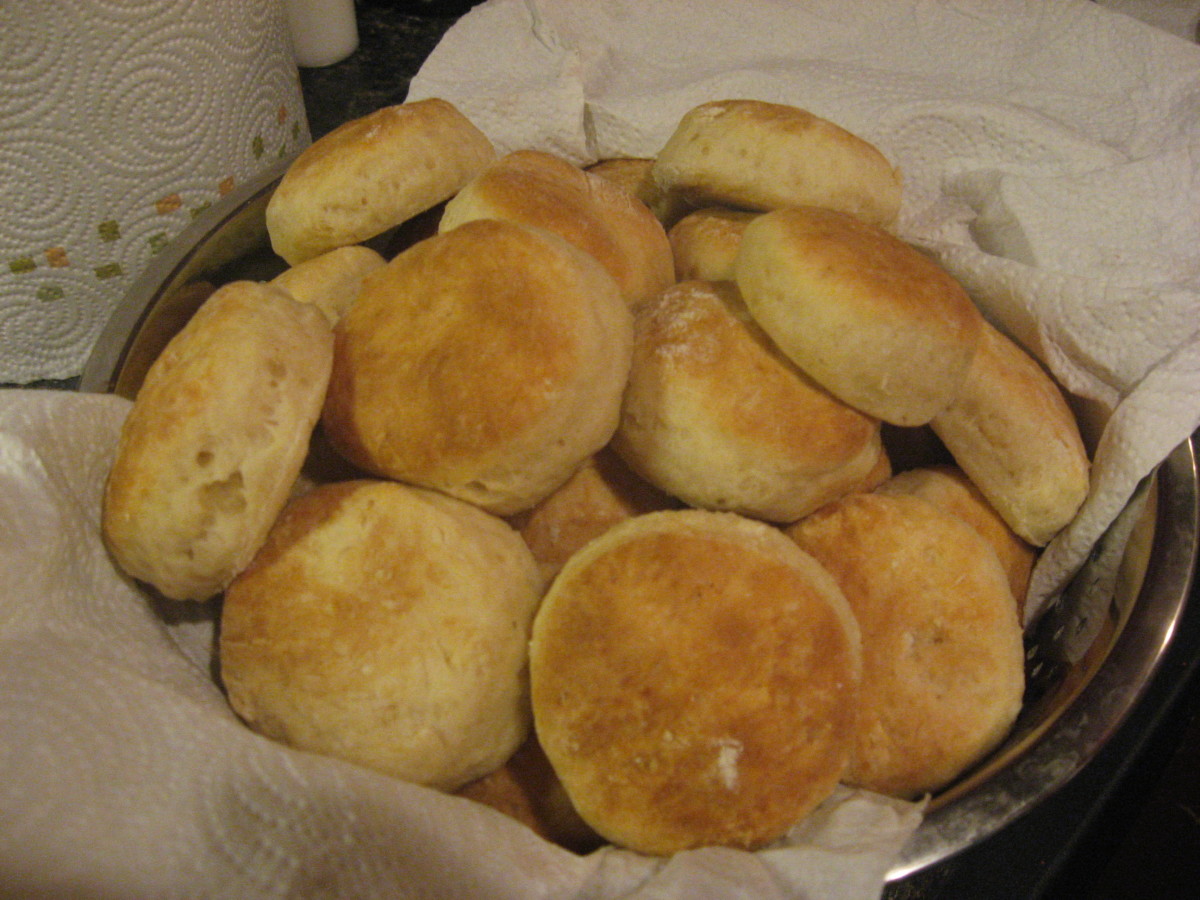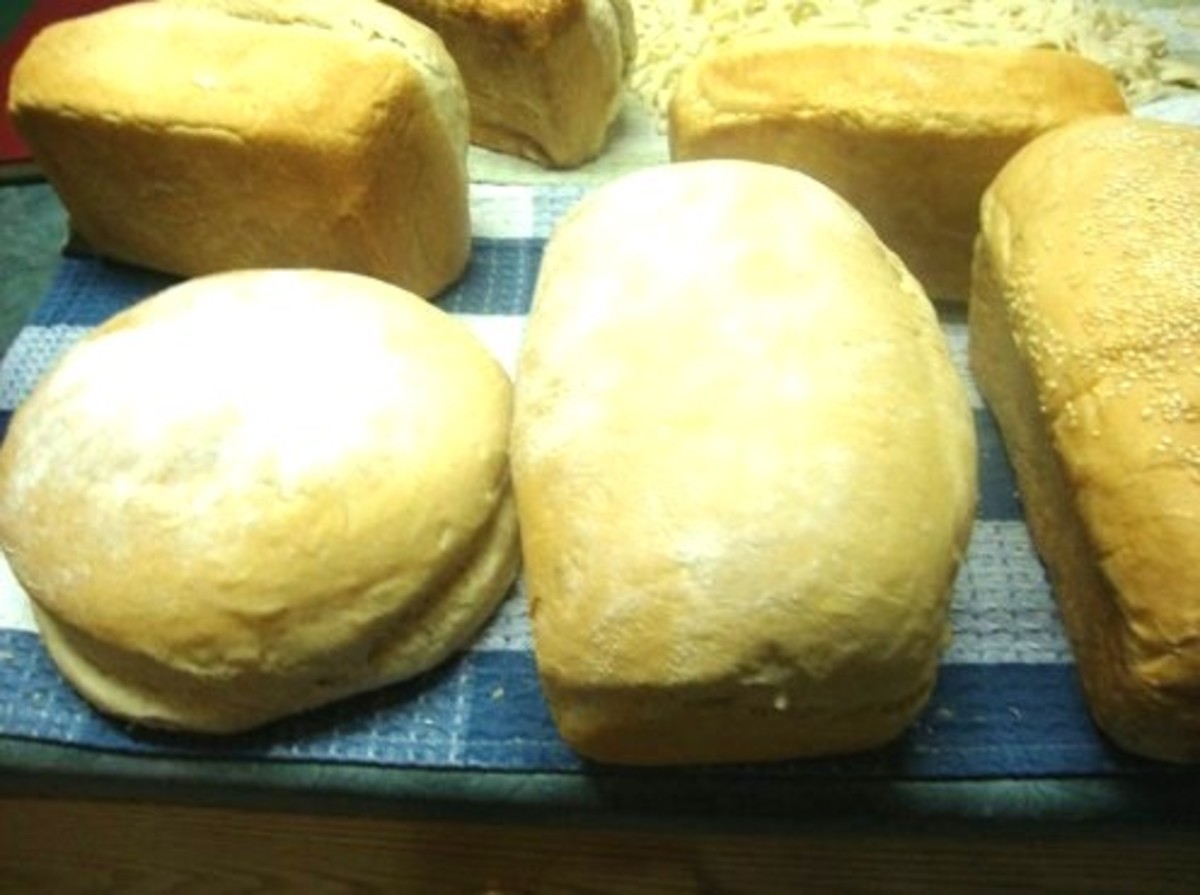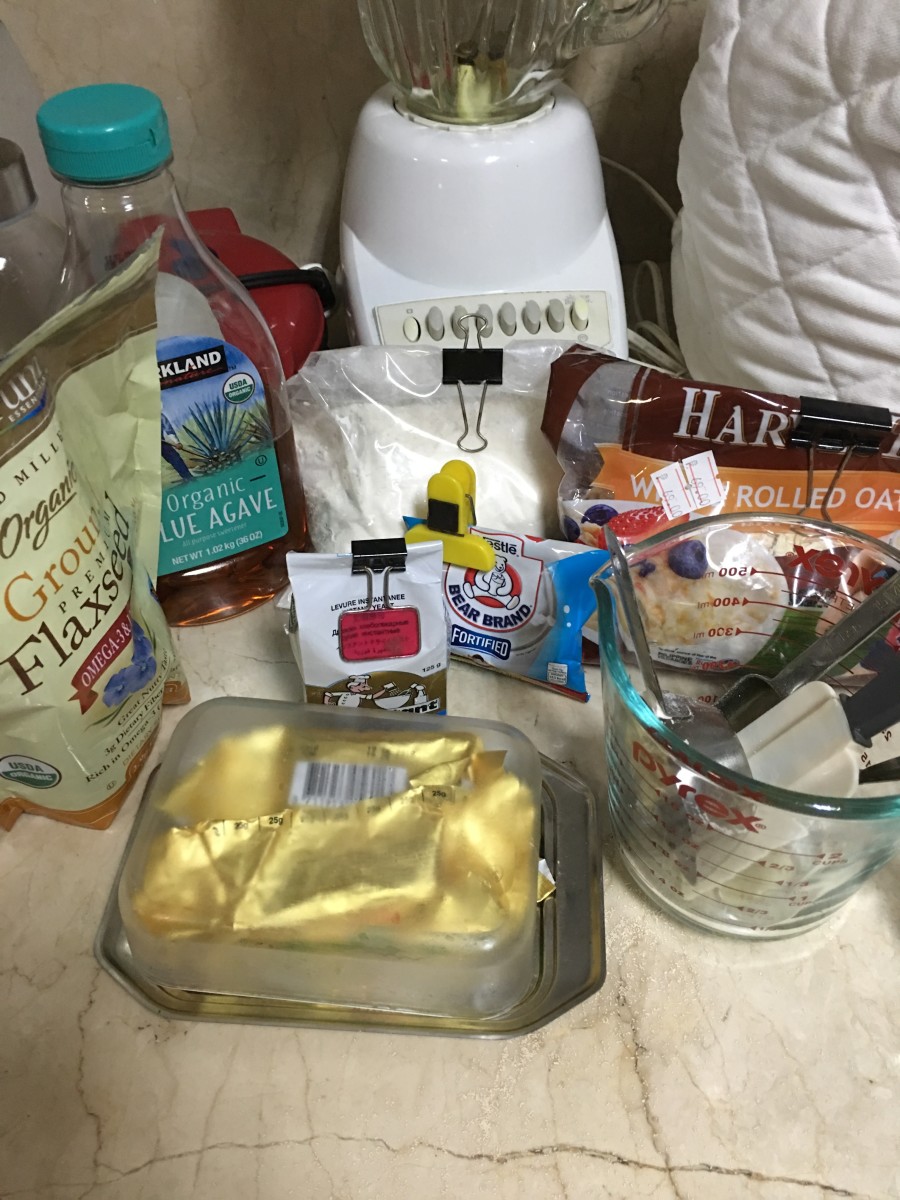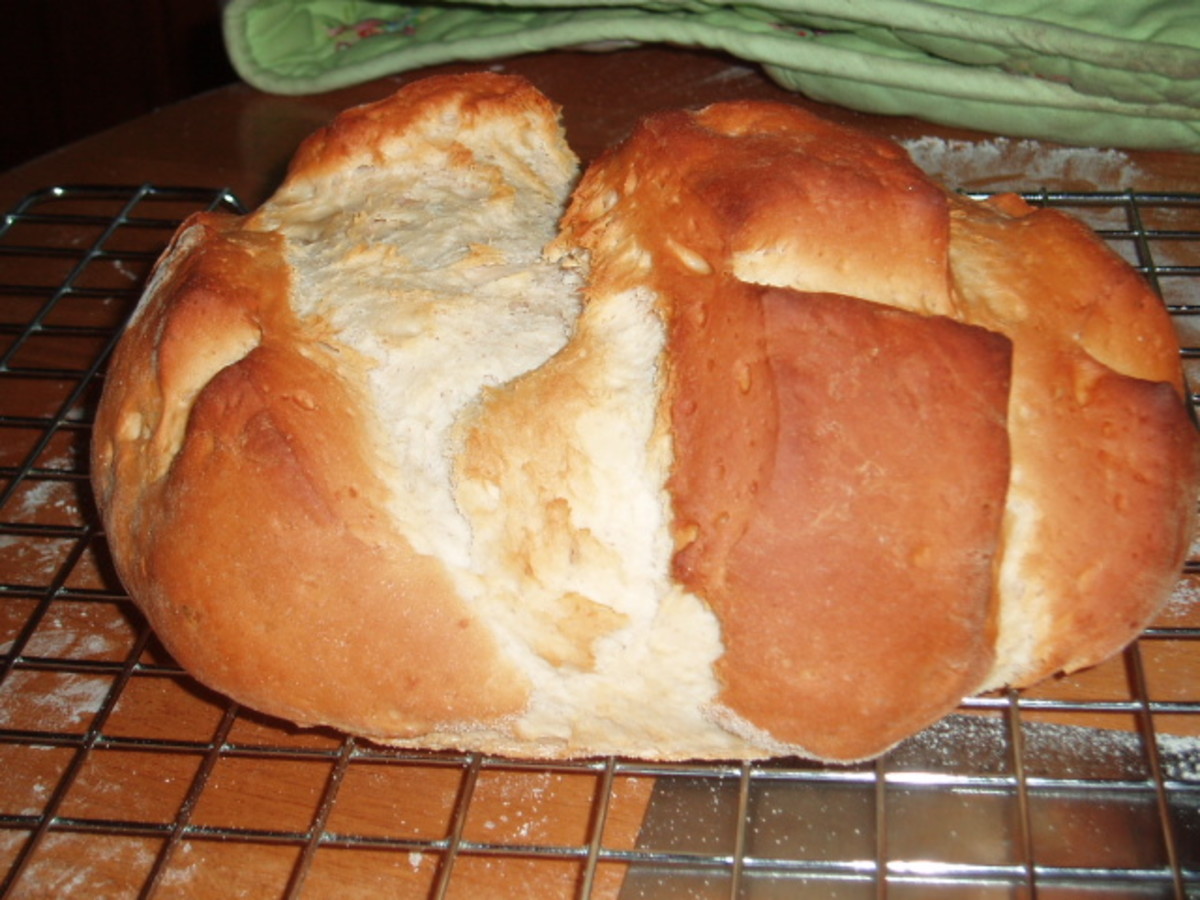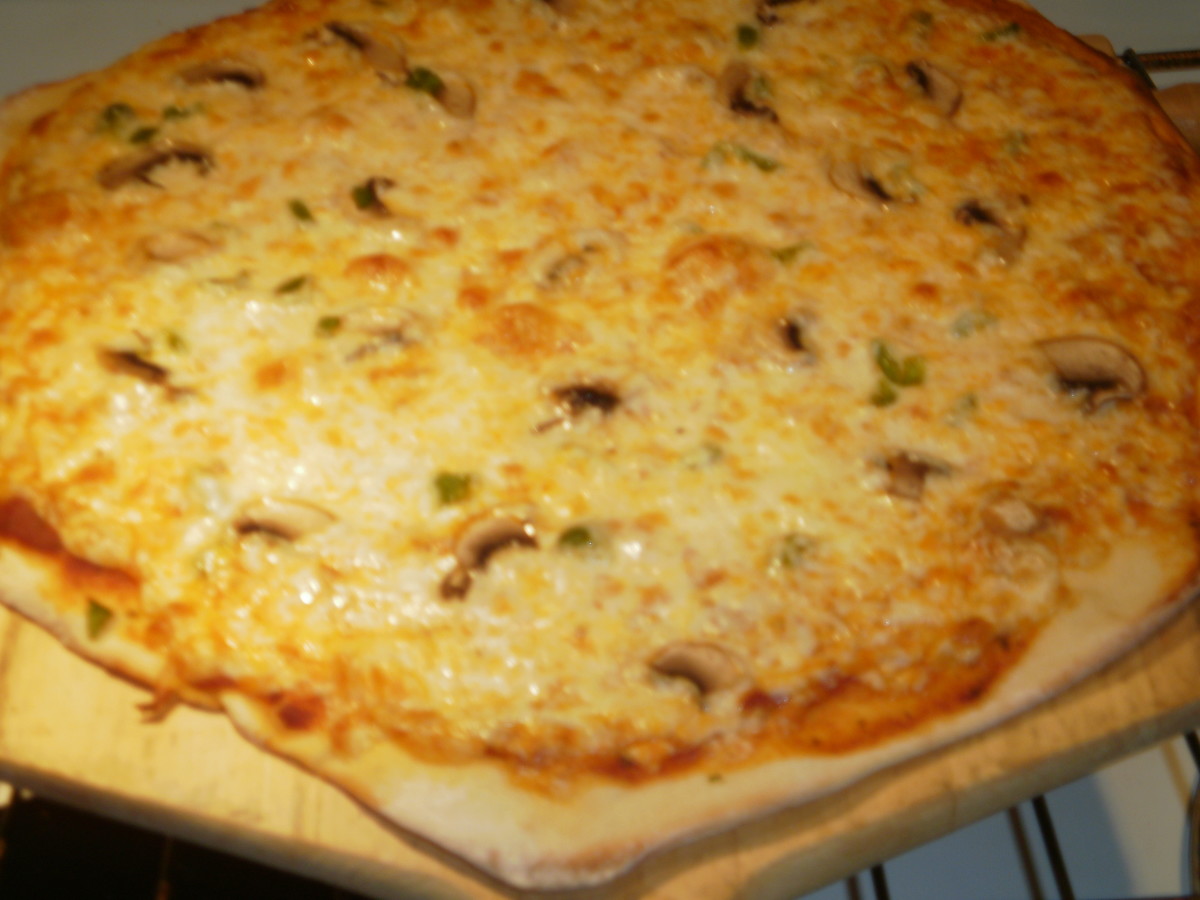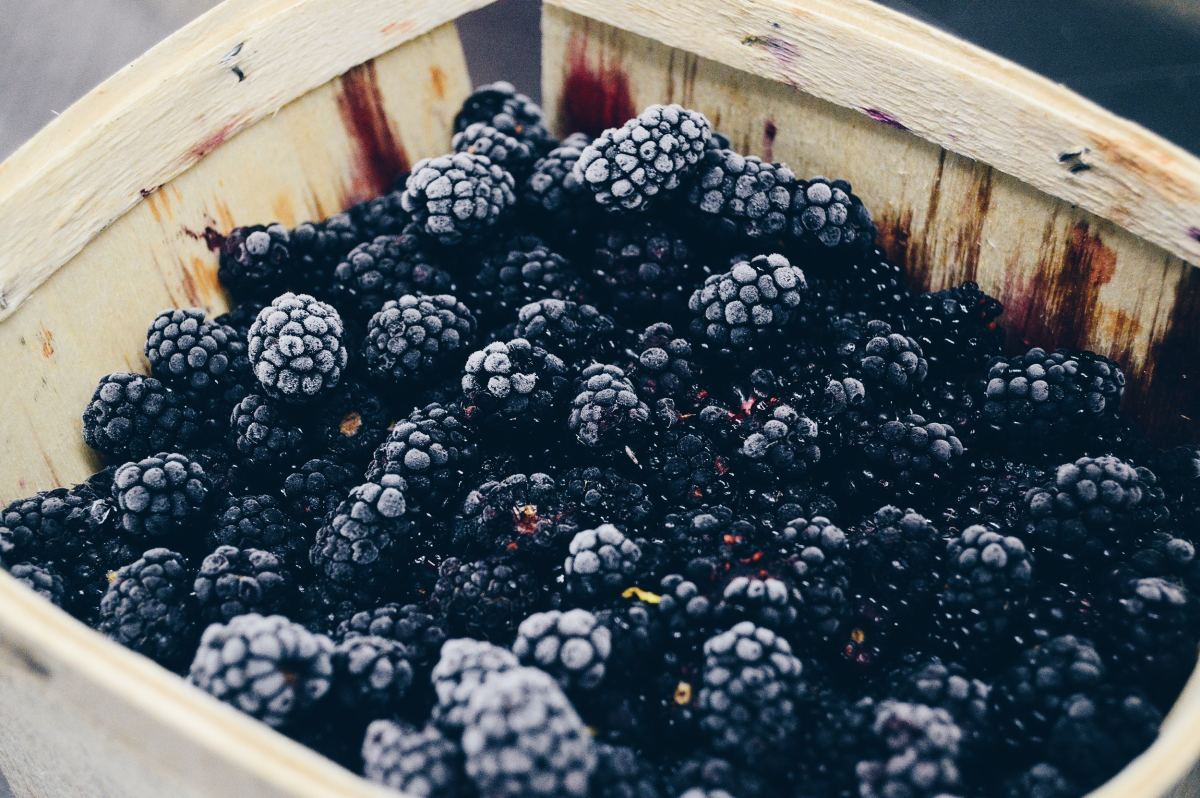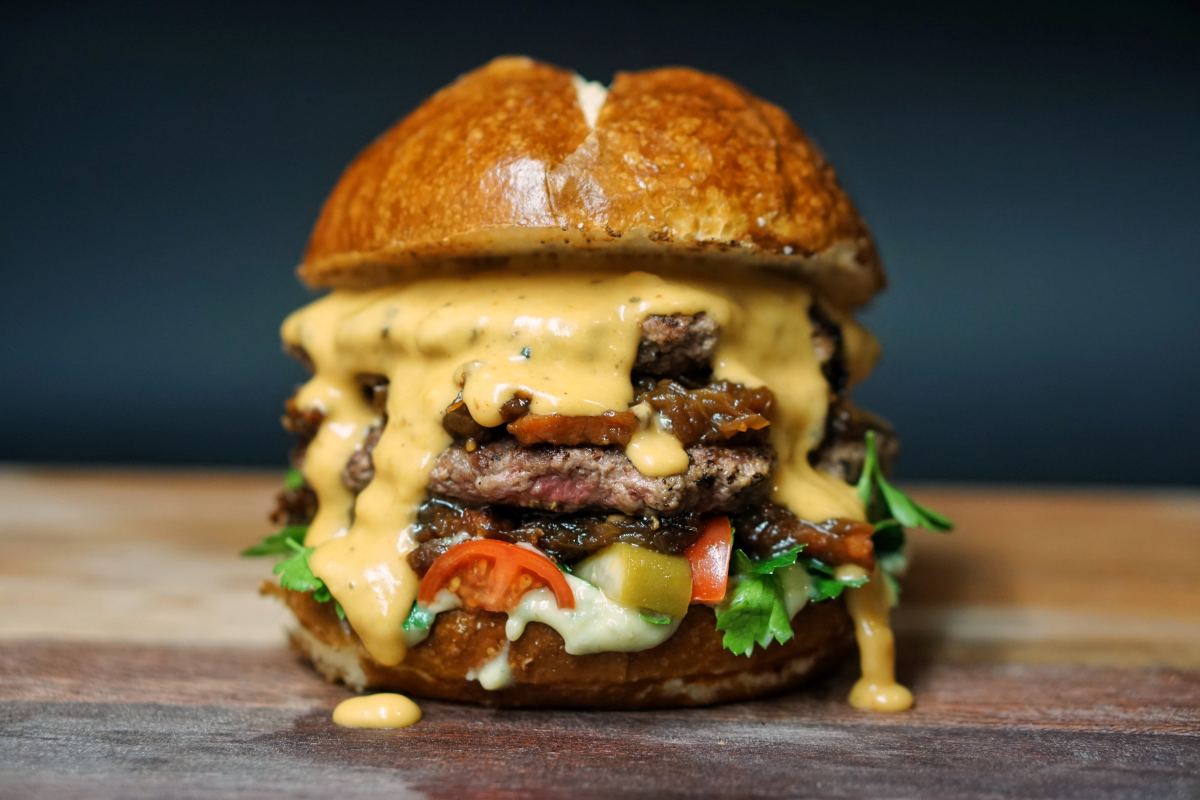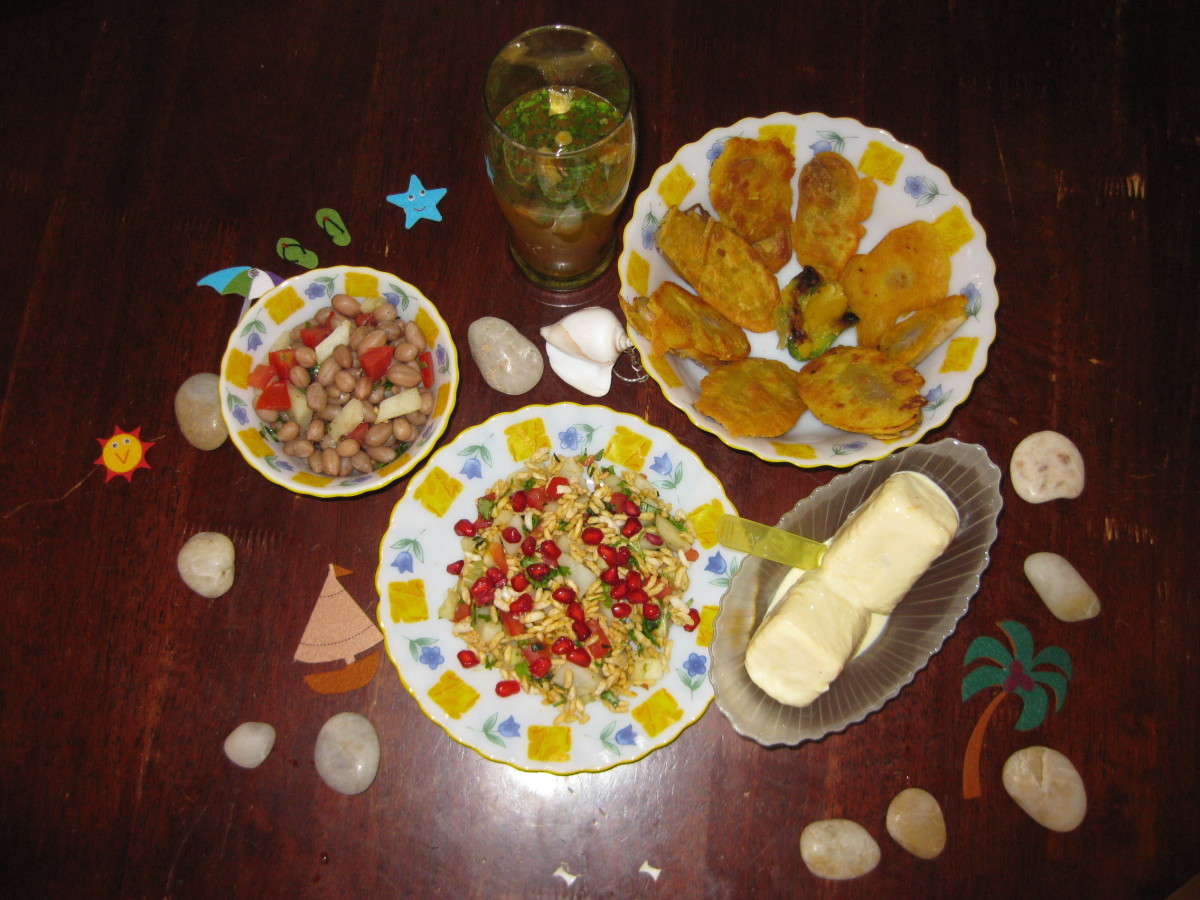Homemade Poppy Seed Bread Baking Tips
Homemade Poppy Seed Bread
Homemade Poppy Seed Bread
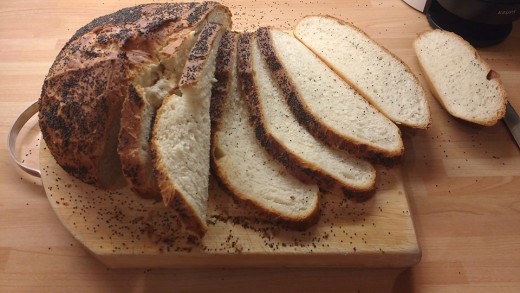
Cook Time
Ingredients for Poppy Seed Bread
- 500 grms strong white bread flour, Sifted
- 40 grms Softened Butter
- 12 grms Fast action dried yeast
- 2 tsp Salt
- 300 ml Water
- 50 ml Olive Oil
- 20 grms Poppy Seeds
Poppy Seed Bread Recipe
- Put the flour and softened butter in a large bowl.
- Add the yeast and salt on opposite sides of the bowl. Mix together.
- Add roughly half of the water and mix with fingers. Continue to slowly add more water, until all the flour is absorbed into the mix. Not all the water may be needed. The dough should be soft but not to wet.
- Knead. Lightly oil your worktop and begin to knead your dough. Knead quickly for about 5 mins to prevent the dough from sticking to your hands. If it is to sticky you can dust your hands with a little flour.
- Prove . Put in a lightly oiled bowl and cover with cling film or a tea towel and leave to prove for an hour.
- The Second quick knead. The dough should have doubled in size. Bash the dough a couple of times on an oiled surface to knock out the air bubbles. Fold and stretch a few times and then knead it a little more for 5 mins.
- Shape the dough into your preffered shape of loaf.
- Line a baking tray with baking paper (not greaseproof) put your loaf onto it, cover with a damp tea towel and leave for a further hour to rise again for another hour.
- Remove the tea towel, score with a knife and brush the loaf with water, then sprinkle on poppy seeds to taste.
- Baking the bread Preheat the oven to 220C (200C fan-assisted) 425F or Gas mark 7.
- Top Tip. Put a baking tin in the bottom of the oven and leave to get hot. Before putting the loaf in, put cold water in the tin add the loaf and close the door. This will cause steam giving a nice shine to the bread.
- Put the Bread in the middle shelf of the oven.
- Bake for about 30 minutes. Remove and check if cooked by tapping underneath to see if a hollow sound is made. If it does then it is baked. Put on a wire rack to cool and your loaf is ready.
Step by Step Photos to follow the instructions for Poppy Seed Bread (Stages 1 and 2)
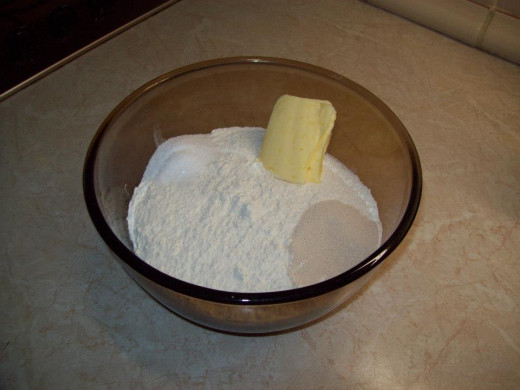
How to knead
First Knead
Lightly oil your surface and begin to knead. Knead quickly for about 5 mins to prevent the dough from sticking to your hands. If it is to sticky you can dust your hands with a little flour.
Stages 3 and 4
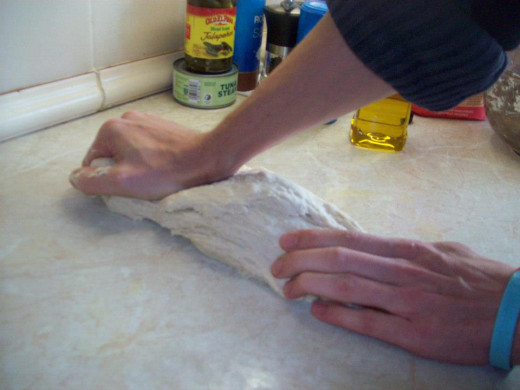
Prove
Put in a lightly oiled bowl and cover with cling film or a tea towel and leave to prove for an hour.
Stage 5
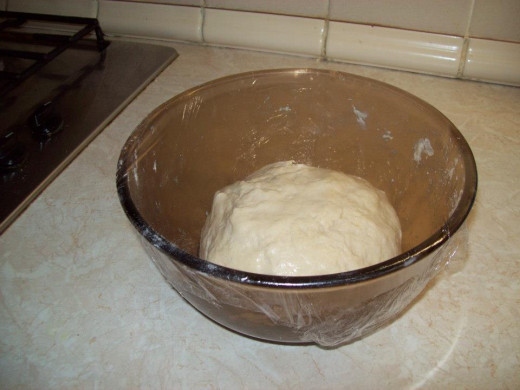
Stage 5
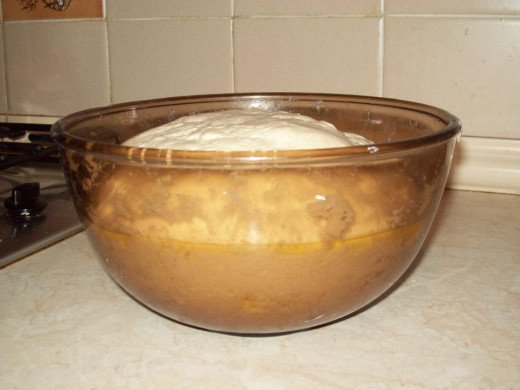
The Second quick knead (Stage 6)
The dough should have doubled in size.
Bash dough a couple of times on an oiled surface to knock out the air bubbles. Fold and stretch a few times and then knead it a little more.
Next, shape into a loaf.
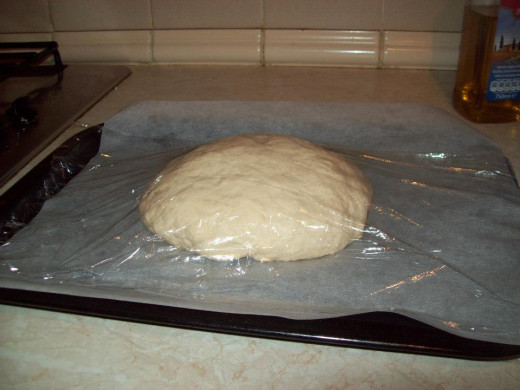
Time to prove again (Stage 7 and 8)
Line a baking tray with baking paper (not greaseproof) put the loaf onto it, cover and leave for a further hour to rise again.
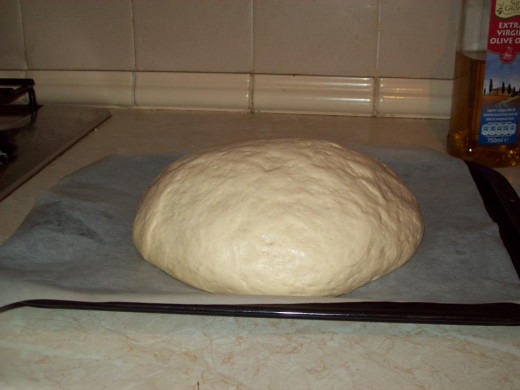
Baking the bread (Stages 9, 10 and 11)
Preheat the oven to 220C (200C fan-assisted) 425F or Gas mark 7.
Remove the damp tea towel or film from the dough, which should have now risen again. Very lightly flour and mark slices on the top.
Put the loaf in the middle of the oven.
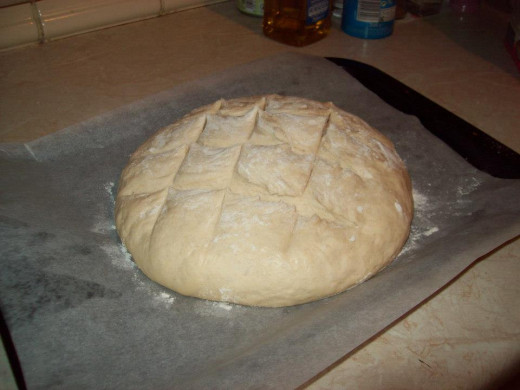
Top Tip
Put a baking tin in the bottom of the oven and leave to get hot. Before putting the loaf in, put cold water in the tin add the loaf and close the door. This will cause steam giving a nice shine to the bread.
Bake for about 30 minutes. Remove and check if cooked by tapping underneath to see if a hollow sound is made. If it does that is good. Put on a wire rack and your loaf is ready.
Stages 12 and 13
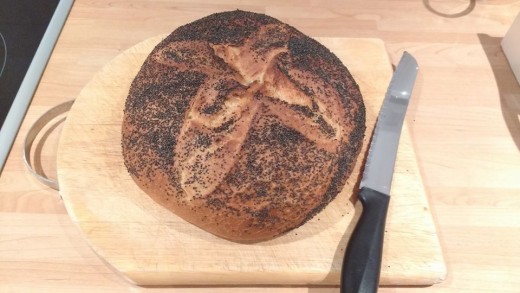
Baking tips, recipes and ingredients for a perfect baked bread.
Baking, unlike other cooking, is a science.
Chemical reactions happen with very precise quantities of ingredients to make bakes rise or drop and change textures and flavours. Baking tips on this page will help you to achieve the perfect baked bread and to realize the precision needed.
When I cook in the kitchen, I'm always quite proud of my guess working approach to cooking. If I am following a recipe I will often add the ingredients thinking 'that is more or less right' rarely using scales, measuring spoons or liquid measures. I can rely on my experience and taste buds to more or less make the food turn out the way I want.
It could not be more different when it comes to baking. The difference of a few grams here and a few grams there can turn a whole bake into a disaster. The moral of the story is, follow the basic rules and ingredients to the gram.
Top Tip, Use Digital Weighing Scales
Due to the precision needed for any type of baking, I would highly recommend the use of digital weighing scales.
Here are the ones I use.
Digital weighing scales
These scales are not only excellent for bread baking but will come in handy for all of the cooking needs in the kitchen. I am Diabetic and have to 'Carb Count' so digital scales like these are not only accurate but a lifesaver for me.
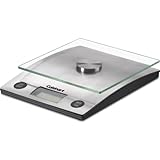
Here are some of my best bread baking tips
The basic ingredients for baking bread
Flour
Flour is basically ground wheat. It contains starch and gluten which give the shape and forms of food. The dough is formed by flour and sometimes a mixture of eggs and water. Air bubbles become trapped which help it rise.
Three basic types of flour
Self-raising flour
Contains approximately 10% protein and a raising agent such as baking powder. Note that if you don't have self-raising flour you can use plain flour and add a raising agent
Plain flour
Contains approximately 10% protein level
Strong flour
The protein level has to be above 12% to represent strong flour. For bread, I would recommend strong flour with between 12% and 15% protein, which is available from most supermarkets. It should say something like Strong Bread Flour, or just Bread Flour.
The higher the protein levels the higher the gluten level. Gluten = glue, it holds and binds the bread and structure together, locking in air bubbles and keeping it strong.
Why shouldn't salt touch yeast?
When adding yeast and salt to the flour in a bowl, always put the yeast on one side, and the salt on the other, as direct contact between the two will deactivate the yeast, stopping rising.
What temp water for bread
Any still water or tap water (if safe) can be used for baking bread.
Make sure once again you follow the exact amount, but the one little problem is that each flour absorbs at a different rate.
The biggest mistake people make when making bread is adding all the water at once.
Add it little by little whilst mixing in the bowl. If mixing by hand, before kneading shape your fingers in the following way. Imagine making a spider with your fingers crawling on the table. Freeze your fingers there. That is the perfect hand and finger formation for mixing.
What temperature water should I use when bread baking?
Warm water helps the yeast to make the dough rise faster. With tepid water, the dough will rise the same amount but slower. The faster the dough reacts the less flavour it will have!
Olive Oil, Butter and Lard
Ingredients for baking bread
Olive Oil
Really any type of Olive Oil can be used when making and baking bread. It doesn't necessarily have to be virgin or extra virgin.
When baking other sweeter bread I would refrain from using olive oil and use butter instead.
Butter and Lard
I always use unsalted, in all types of cooking, that way you can always add salt to taste. Using salted butter gives you less control as you cannot lower the amount of salt.
Butter Softening Tip
If soft butter is needed and it has been in the fridge do not microwave it. Put the butter in hot water for a couple of minutes. This will make it nice and soft without melting it to liquid.
Little Lard Trick
To get lard distributed more evenly and finely in the mix you can freeze it and then grate it like cheese.
Can I use olive oil to knead bread?
Flouring the surface to stop the dough from sticking adds more flour into your dough with the risk of making it 'tight'.
Olive Oil is a great alternative, and your surface will be easier to clean afterwards.
What are the differences between different types of yeast?
Bread Baking Tips
Yeast is a fungus similar to that of others that we are all used to, such as mushrooms. Yeast is the active ingredient used in baking to give the bake it's rise.
Yeast can be found in three basic forms
1) Fast action powdered yeast, which is available in little sachets or packets from most supermarkets.
2) Dried yeast, this you have to rehydrate with water and sugar, leave for 50 minutes to bubble before you can use it. Waste of time and nonsense, don't use this.
3) Fresh yeast, (fast action yeast is the dried form of this).
Things to know
When using, fast action yeast is concentrated, so you have to use a third less than fresh yeast if the only fresh yeast is used in the recipe.
Of these three types, I would always recommend fast acting yeast. It lasts longer, you can keep it in your cupboard for years.
More loaf of bread recipe baking basics tips
Other important factors for baking bread are room temperature, the temperature of ingredients before baking, and even moving the bake. A little tap might just be what is needed to burst the air bubbles to get your desired effect, or unintentionally could deflate your bake to the effect of deflating a car tyre.
Pastry Scrapers
A pastry Scraper is an excellent tool to help you shape, cut and manipulate your bread dough and other baking doughs
© 2012 Peter Badham

